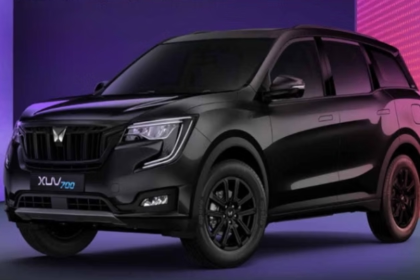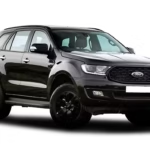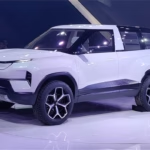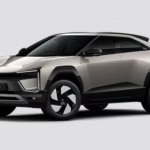Introduction
For over a decade, Tesla dominated the electric vehicle revolution — a company that not only made EVs sexy, but made them desirable. From the Model S that revolutionized luxury performance to the Model 3 that democratized EVs, Tesla became the byword for innovation, range, and state-of-the-art technology. However, over the past few years, that dominance has begun to erode.
With increasing competition, sagging sales, and changing consumer needs, Tesla new pedestal in the world EV market has started to shake. And now, as the world looks on, Elon Musk’s company is preparing for its biggest counterattack so far — going back to its original purpose: making electric cars affordable for all.
Rising Competition
- BYD (China): The world’s leading volume EV seller today, BYD has taken huge market share in Europe and Asia with its cheaply priced models such as Atto 3 and Dolphin, providing a good range at close to half Tesla’s cost.
- General Motors (U.S.): With Chevrolet Equinox EV and Bolt EUV, GM has established itself as a budget-friendly option in North America, head-on competing against price-sensitive Tesla enthusiasts.
- Hyundai & Kia (South Korea): Their Ioniq and EV6 lines have won the world with premium interiors, space-age styling, and affordable pricing.
- Chinese Startups (Nio, XPeng, Zeekr): These tech auto manufacturers are quickly catching up, providing advanced self-driving capabilities and slashing pricing that challenges Tesla’s technological superiority.
Tesla’s Bold Comeback Move
- New Budget EV Lineup: Tesla new plans to launch a new generation of affordable electric vehicles, referred to internally as “Model 2” or “Model C.”
- Target Price: $25,000–$30,000 (Rs 20–25 lakh) — Tesla’s lowest price ever, aimed at appealing to middle-class buyers around the world.
- Objective: To regain lost market share by joining the mass EV market, not only the luxury market.
- Production Strategy: Founded on a next-gen platform at Tesla’s Gigafactories in Mexico, Texas, and Shanghai for high-volume production efficiency.
- Vision: Strategic reset — moving Tesla from a premium brand for the few, to a mobility solution for the many.
Tesla’s Market Share Decline
Tesla’s previously invincible position in the world EV market has started to decline. Having ruled the electric vehicle space for close to a decade, the company has experienced a discernible dip in sales growth, particularly in high-growth markets such as the U.S., Europe, and China — countries that comprise the majority of its revenue.
Tesla new worldwide market share fell from more than 18% to close to 13%, industry reports indicated. The decline was even steeper in China, where indigenous players such as BYD and Nio jumped ahead, providing lower-priced alternatives without sacrificing performance. Even in Europe, where Tesla had previously beaten traditional automakers, emerging from Hyundai, MG, and Volkswagen have gradually cut into its base. The slowdown represents a turning point for Tesla — a moment that has compelled Elon Musk and his team to reconsider their pricing, production, and positioning strategies.
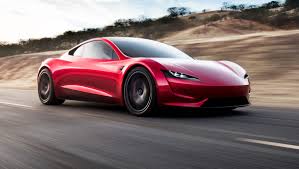 Reasons for the Decline
Reasons for the Decline
Increased Competition from Low-Cost EVs:
Tesla new largest threat has not been from luxury car makers, but from low-cost EV manufacturers. BYD, MG, and Hyundai, among others, have perfected the recipe of delivering rival range, sleek design, and intelligent technology — all at prices that knock Tesla’s entry-level cars down 20–40%. This has diverted price-sensitive buyers, particularly in emerging and price-conscious markets.
End of Federal Tax Credits or Reduced Incentives:
In a number of key markets, such as the United States and segments of Europe, EV tax credits and subsidies once reserved for Tesla customers have expired or been repurposed in favor of local automakers. The elimination of the $7,500 U.S. federal tax credit for some Tesla models at the end of 2025 made them much less attractive to price-conscious shoppers, diminishing Tesla’s competitive advantage in its own market.
High Costs of Tesla’s Current Lineup (Model 3, Y, S, X):
Even after price reductions, Tesla’s models are still costly. Model 3 begins at more than $38,000, while Model Y is priced around $45,000, pricing them out for normal customers in most markets. At the same time, luxury cars such as Model S and Model X appeal to a niche market, keeping Tesla from benefiting from mass marketability.
Market Saturation in the Premium EV Space:
The premium EV space has become congested with options — from Mercedes EQ lineup to BMW i4 and Audi e-tron. The more brands that bring luxury EVs with similar or superior comfort and aesthetics, the less Tesla’s early mover advantage holds. The brand that stood for exclusivity now confronts the same competition it disrupted.
Elon Musk’s Vision: Affordability as “The Next Frontier”
Tesla new Elon Musk has been saying for years that the real future of Tesla is not luxury, but accessibility. In various interviews and shareholder meetings, Musk has repeatedly stated that the mission of the company has always been to “accelerate the world’s transition to sustainable energy” — and that just can’t be done if EVs are a luxury item. Affordability is “the next frontier” for Tesla, he said, noting that the next generation of cars will be aimed at lower costs, quicker scaling, and more accessibility. By this philosophy, Tesla’s new range of affordable EVs is less a business strategy — but more of a deviation back to the original mission of the company.
The New, Affordable Tesla Models
Tesla has finally announced intentions to introduce a new crop of affordable electric cars — a development regarded as the most ambitious undertaking since the Model 3. Code-named within the company as “Model 2,” “Model C,” or Tesla Compact, this new model aims to bring the Tesla new lifestyle to millions who have long been the brand’s admirers but have hitherto considered it too expensive.
The initiative represents Elon Musk’s vision for years of making a “truly mass-market electric vehicle” that has both performance, range, and technology at a price comparable to traditional petrol cars. These new vehicles are likely to transform not just Tesla’s brand identity but the face of global EV affordability as well.
Key Specs (Anticipated Range, Price Range, Performance)
- Range: Approximately 350–450 km (220–280 miles) on a full charge, varying with the battery pack type.
- Performance: From 0–100 km/h (0–60 mph) in approximately 6.5–7 seconds, which is fast but also economic for urban and suburban driving.
- Battery: Likely to have LFP (Lithium Iron Phosphate) chemistry — less expensive and longer-lasting than Tesla’s present NCA cells.
- Charging: Compliant with Tesla’s Supercharger V4 network, which delivers 200–250 km of range in 15 minutes.
- Design Language: Crossover or hatchback design minimized for urban usability and affordable production.
Predicted Price Range
- Global Range: $25,000–$30,000 USD, the most budget-friendly car that Tesla has ever made.
- India Conversion: Approximately Rs 20–25 lakh (ex-showroom), placing it directly against higher mid-range EVs in India, such as the MG ZS EV and Tata Curvv EV.
- Objective: To make Tesla ownership accessible to first-time EV purchasers and younger consumers who couldn’t afford previous premium models.
Developed on Tesla’s Next-Gen Platform for Cost-Savings
- The new EVs are built on Tesla’s Next-Generation Vehicle Platform, designed for quicker, less expensive production.
- The platform has a modular design, so components can be reused across multiple Tesla models, cutting production costs by almost 40%.
- It also uses the “unboxed process” — an innovative assembly system that makes it possible to construct various parts of the automobile separately before uniting them, reducing factory time and floor space.
- According to Tesla, this innovation will make them double the number of cars annually they can manufacture from the same footprint of the factory.
Built to Compete Head-on with Low-Cost EVs
- BYD Dolphin (China): A strong competitor in the $25K segment, providing comparable range and specs for less money.
- Hyundai Kona EV: Reliable and comfy, it owns mid-range EV markets — the same segment Tesla is now targeting.
- MG4 Electric (UK/India/Europe): Provides stunning range and performance for under Rs 25 lakh; Tesla’s Model 2 will be a direct global competitor.
- Tesla’s approach is to beat these models on software, range maximizing, and charging infrastructure so that even when priced lower, Tesla is technologically superior.
Manufacturing and Production Plans
Tesla’s move to introduce a new generation of low-cost electric cars is more than a product expansion — it’s a straightforward disruption of the global EV landscape. Tesla’s rivals for years took solace in one clear fact: its cars were luxury products with hefty price tags, leaving plenty of room for others to own the low-cost EV segment.
That comfort no longer exists. With its entry into the $25,000–$30,000 price segment, Tesla new has effectively thrown down the gauntlet against established legacy players as well as new EV entrants. Industry titans like BYD, GM, and Volkswagen, who have invested so much in their mass-market electric lineups, are now in for a fight: compete on price, but also on Tesla’s turf of performance, range, and tech. This strategic shift can redefine global consumer expectations — making electric mobility not only desirable, but a given.
How This Shift Pressures Competitors
- BYD (China): BYD’s competitive edge is based on price, but Tesla’s arrival at a comparable price point with superior software and quicker charging may dilute BYD’s central strength, particularly in overseas markets such as Europe and Southeast Asia.
- General Motors (U.S.): GM’s drive through the Chevrolet Bolt and Equinox EV was centered on beating Tesla on price. Now that Tesla has entered the same space, GM might find it difficult to differentiate its products based on value only.
- Volkswagen (Europe): VW’s ID series has been a key support in Europe’s EV revolution, but Tesla’s superior brand attractiveness and charging network might draw consumers away from it, compelling VW to revisit its pricing as well as pace of innovation.
Potential Price War in the Global EV Industry
- Experts foresee a huge price war for EVs potentially starting as early as late 2026 as manufacturers scramble to keep up with Tesla’s new price strategy.
- That would cut the average cost of EVs by 15–20% worldwide, boosting adoption but constricting profit margins across the board.
- Smaller players and regional manufacturers will be hard-pressed to survive as the big ones play a price war.
- Legacy carmakers with slower supply chains may face financial strain if they can’t adapt to Tesla’s cost-efficient production model.
Analysts’ Reactions — Could This Redefine EV Affordability?
- Industry experts call this Tesla’s “Model 3 moment 2.0” — a game-changer that could make EVs mainstream faster than any policy or subsidy.
- Analysts say that this action will set a new benchmark for what customers want from a budget EV — marrying range, quality, and internet connectivity.
- Banks expect demand for EVs to boom in emerging markets, particularly if Tesla ramps up production in India, Brazil, and Southeast Asia.
- There are reservations about Tesla’s profitability, since cheaper prices may squeeze margins unless manufacturing efficiency is up to expectations.
Potential Ripple Impacts on Charging Networks and Battery Suppliers
- Demand for low-cost LFP batteries should increase, rewarding suppliers such as CATL and BYD battery business, but also placing pressure on raw material markets for lithium and iron phosphate.
- Tesla’s growth should accelerate the worldwide transition from nickel-based to iron-based batteries because of cost savings and sustainability gains.
- The introduction of affordable Tesla will also increase the use of Tesla’s Supercharger network, inducing growth in new markets.
- Competing charging companies and grid operators will potentially have to increase infrastructure investments to accommodate a possible surge in EV take-up triggered by Tesla’s mass-market entry.
Strategic Goal: Regaining Market Share
Tesla’s roll-out of affordable EVs is a calculated effort to recapture lost market share and maintain its lead as the world’s leader in electric mobility. Having lost ground to cost-conscious rivals, the company is now turning its sights on a wider customer base — first-time EV buyers and price-sensitive markets where adoption has previously been constrained.
By pricing its technologically sophisticated cars lower, Tesla hopes to rebrand itself, moving away from a high-end luxury automaker to a mass-market mobility player. This business shift is not merely about volume sales; it’s about building long-term customer loyalty, growing global footprint, and accessing heretofore untapped markets where EV adoption is still in its early stages.
Reaching First-Time EV Buyers and Emerging Markets
- Targeting middle-income consumers previously priced out of Tesla ownership.
- Prioritizing cities and semi-cities in new markets where EV awareness is growing but remains unaffordable.
- Providing incentives such as financing opportunities and bundled home charging packages to induce first-time purchasers.
Rebalancing Tesla’s Image from “Luxury” to “Mass Electric Mobility”
- Breaks away from the perception of Tesla as a prestige premium brand.
- Promoting the new models as affordable, practical, and high-tech cars for everyday driving.
- Establishing Tesla as a leader not only in innovation, but also in green and accessible mobility.
How Lower Prices Could Unlock Exponential Growth in Emerging Markets
- India: Affordable EVs could open up an enormous potential market, dependent on ICE today.
- Southeast Asia: Urbanizing populations with rising awareness of EVs make this continent a top priority target.
- South America: Price-conscious markets where Tesla’s new vehicles can displace traditional cars and hasten EV adoption.
- Lowering entry barriers can speed up Tesla’s global expansion, with a domino effect in other emerging markets.
Predicted Boost to Tesla’s Global Sales and Revenue Streams
- Experts forecast a sharp increase in unit sales in 2–3 years after the launch of the new vehicle.
- Wider adoption may stabilize Tesla’s market share against strong competitors.
- Expansion in developing markets may create new sources of revenue outside of core luxury segments.
- Tesla’s ecosystem — software, Supercharger usage, and energy products — will see more recurring revenue from more users.
Impact on Global EV Market
Tesla’s entry into mass-market electric vehicles is set to redefine the global EV market. Hitherto, Tesla new premium positioning enabled competitors to sweep the budget EV segment, but the new models are set to turn that around. By pushing into the $25,000–$30,000 price range, Tesla sends a challenge to incumbent players across price, technology, and brand fronts.
This strategic move might initiate a significant reshuffling of worldwide EV markets, impacting manufacturing strategies, customer expectations, and even electric mobility adoption rates globally. While manufacturers rush to react, the ripple effect is certain to spread across value chains, battery manufacturing, and charging stations.
How This Move Pressures Competitors
- BYD (China): Tesla’s new price point goes straight after BYD’s affordable models, such as the Dolphin, undermining its domestic and export leadership.
- General Motors (U.S.): GM’s Bolt EUV and Equinox EV may suffer in terms of intense competition as Tesla balances affordability with its stronger software ecosystem.
- Volkswagen (Europe): VW’s ID series might have to lower prices or upgrade features in order to maintain European market share against Tesla’s volume push.
Possible Price War in the Global EV Market
- Tesla’s pricing plan may have a ripple effect and initiate a worldwide EV price war, compelling rivals to drop prices aggressively.
- Prices for average EVs may fall by 15–20%, spurring adoption but squeezing profit margins.
- Smaller carmakers might not be able to compete without significant cost savings or state aid.
- Traditional manufacturers would come under more pressure to step up innovation or risk falling behind in the mass-market EV space.
Analysts’ Reactions — Could This Redefine EV Affordability?
- Analysts call this a possible “second Model 3 revolution”, poised to bring EV mainstreaming to the world.
- May redefine consumer expectations: low-cost EVs now need to offer range, technology, and reliability on a par with flagship models.
- Expect a boom in demand for EVs in emerging markets such as India, Southeast Asia, and South America.
- There are still issues concerning Tesla’s margins and whether or not production can scale up effectively to cater to global demand.
Potential Ripple Impacts on Battery Suppliers and Charging Networks
- Increased demand for LFP (Lithium Iron Phosphate) batteries, which would enrich suppliers such as CATL and BYD but strain raw material supply chains.
- Moves the world towards a transition away from nickel-based batteries and to less expensive and sustainable alternatives.
- Greater use of Tesla’s Supercharger network will spur expansion into new markets.
- Charging infrastructure suppliers and grid managers could require instant expansion to support increased EV uptake driven by low-cost Tesla vehicles.
Challenges and Concerns
Tesla new entry into the low-cost EV market is ambitious and potentially revolutionary, it comes with some serious risks. Reducing the cost of its cars may put profit margins under pressure, particularly if efficiencies of production fall short. Producing in volume brings risks of delays in production and adverse quality control issues, which have sometimes plagued Tesla previously.
In addition, pushing into mass-market niches might also affect Tesla’s premium brand image, possibly scaring off high-end buyers who appreciate uniqueness. Aside from internal operational threats, worldwide economic volatility and changing raw material prices — specifically lithium, cobalt, and nickel — could add a further layer of complexity to Tesla’s plans, necessitating prudent monetary and logistics planning to guarantee profitability and sustainability.
Risk of Decreased Profit Margins for Tesla
- Pricing at a reasonable level will squeeze margins against high-end models such as Model S and X.
- Survival hinges on high production efficiency and low-cost supply chains.
- Any surprise rise in production expenses will undermine profitability in the low-end segment.
Production Delays or Quality Control Issues
- New model growth could cause assembly-line bottlenecks in Gigafactories.
- Past recalls and minor flaws in Tesla suggest danger in mass production.
- Consistent quality is paramount to safeguarding brand reputation.
Effect on Premium Customer Perception
- Rolling out mass-market models will water down Tesla’s luxury brand image.
- Premium customers might view the brand as less upscale.
- Tesla needs to balance mass-market appeal with premium innovation to maintain loyalty.
Global Economic Instability and Unstable Raw Material Prices
- The prices of lithium, cobalt, and other critical EV components are volatile.
- Global inflation and currency volatility might influence production costs and pricing strategies.
- Supply chain breakdowns can postpone launches or restrict production capacity.
- Strategic sourcing and hedging can be required by Tesla to counteract financial risks.
Expert Opinions & Market Reactions
Tesla’s promise of cheap EVs caused shockwaves in the auto and financial markets. The industry is watching with interest to see if the company can implement its ambitious strategies without sacrificing quality or profitability. Industry analysts say that Tesla’s move into the mass market may spur faster global EV adoption, but warn that execution risks are high. In contrast, online forums and pioneer consumers have greeted this development with glee, creating lots of social media buzz. The stock market has also responded, with investors’ optimism tempered by worries over margin squeeze risks and production issues.
Quotations or Insights from Auto Analysts and Investors
- Other analysts call it Tesla’s “second Model 3 revolution”, poised to redefine low-cost EV benchmarks.
- Investors are watching Tesla’s production schedules and cost savings closely to gauge profitability.
- Market analysts point out that rival automakers will be forced to react swiftly with pricing or technological advancements.
- Some analysts warn of margin compression, stressing that cheaper models need perfect execution to stay profitable.
Early Consumer Reaction and Cyber Chatter
- Social media sites reflect excitement about Tesla’s new, cheaper EVs, particularly among new EV buyers.
- Customers are comparing rumored specs with rivals such as BYD Dolphin, Hyundai Kona EV, and MG4 Electric, sparking debate on range and cost.
- Forums suggest pre-bookings will be anticipated, reflecting high pent-up demand.
- Part of the online audience is concerned about quality and after-sales care for mass production.
Effect on Tesla’s Stock Performance After Announcement
- Tesla’s stock was short-term volatile, consistent with investor enthusiasm balanced with caution.
- Analysts expect successful implementation to propel long-term stock performance, with market share in the mass segment increasing.
- Possible margin squeezes and competition would generate medium-term risk uncertainty and pressure investor sentiment.
- Collectively, the announcement has reinforced the reputation of Tesla as an industry leader in innovation, which will underpin valuation despite near-term risks.
Conclusion
Tesla’s pivot to mass-market electric vehicles is a turning point in the company’s history. By catering to first-time EV purchasers and entering emerging markets, Tesla is leaving behind its luxury brand status to pursue mass-market mobility, to make electric cars a reality for millions of people around the world. This ambitious move may jump-start global EV adoption, raising the bar for what is expected of mass-market, technologically sophisticated cars.
As Tesla sets its sights on taking on rivals, spurring would-be price wars, and redrawing the EV map, the big question is: Will this “affordable revolution” restore Tesla’s lost market share and cement its dominance, or will it fuel an even bigger competitive fight on the global EV stage? Time alone will know, but everyone in the industry is holding its breath, and the stakes have never been so high.
FAQs
- How much does Tesla’s new budget EV cost?
Tesla’s new mass-market electric vehicle will be priced in the range of $25,000–$30,000 USD (nearly Rs 20–25 lakh in India), which will be the company’s most affordable model till now.
- When will Tesla release its new EV models worldwide?
Production is to start by late 2026, with first deliveries in North America, Europe, and China, and subsequent rollout into emerging economies such as India, Southeast Asia, and South America.
- Will the lower-cost Tesla be in India?
Yes, Tesla has shown plans to launch its low-cost EV in India, taking advantage of the country’s increasing EV infrastructure and demand for low-end electric vehicles. The actual launch date will be contingent on local manufacturing and importation strategies.
- What range will Tesla’s $25,000 EV have?
The new Tesla EV will provide a range of 350–450 km (220–280 miles) for a full charge, depending on battery setup, competing with existing mid-range EVs for sale.
- What does the comparison of Tesla’s new EV with BYD and Hyundai models look like?
Tesla’s mass-market EV is set to directly compete with BYD Dolphin, Hyundai Kona EV, and MG4 Electric by providing:
- Better software and in-car tech.
- Access to Tesla’s Supercharger network.
- Competitive range and performance with a comparable or slightly premium price point.
- A global brand appeal that renders it aspirational yet affordable.

